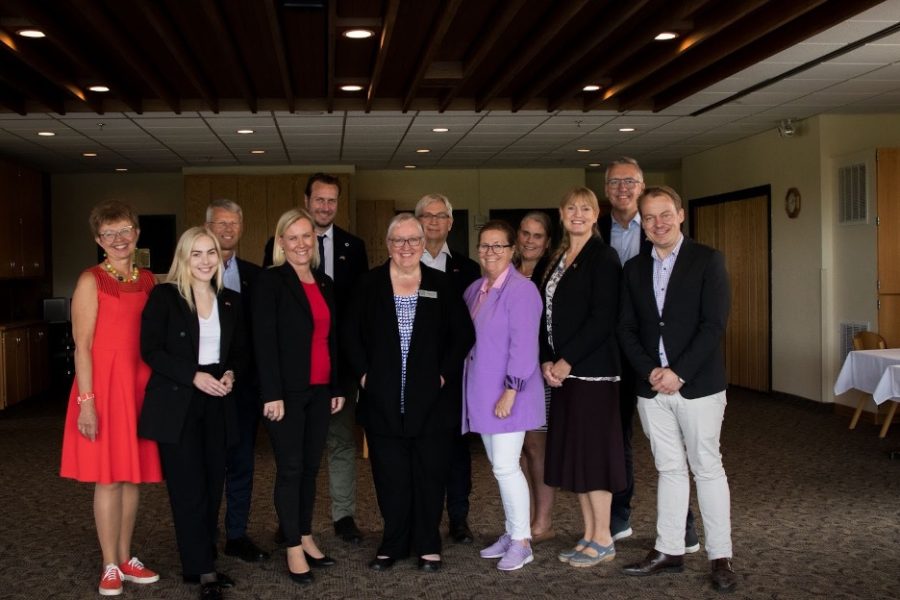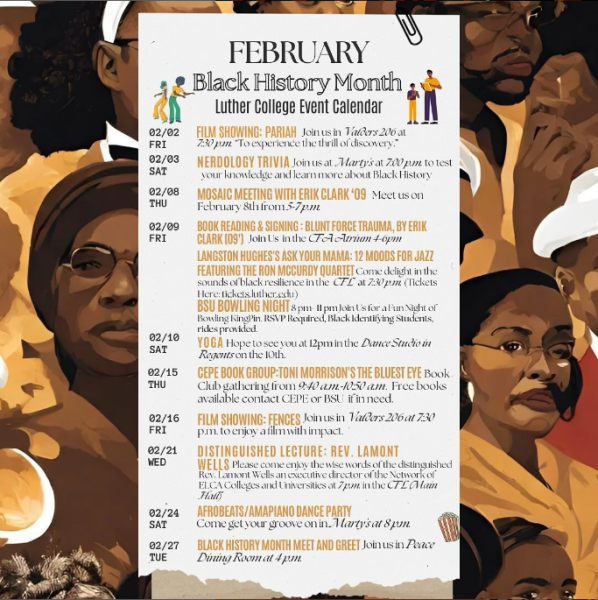Members of the Norwegian Parliament visit Luther
On September 14, 2022, members of the Norwegian Parliament visited Luther to speak about Norway’s parliamentary system and the contemporary political issues Norway is facing. The 45-minute lecture was held in Olin 102. In total, there were 16 members of parliament in attendance.
Both Parliament members who spoke, Lene Vågslid and Helge André Njåstad, are members of the Committee on Local Government and Public Administration, which handles matters regarding local government, immigration policies, housing policies, and regional planning. Vågslid is the acting committee chair, and Njåstad holds the position of first vice chair. In total, there are 15 members of the Committee on Local Government and Public Administration representing seven political parties.
While in the United States, the Committee visited Minneapolis, San Francisco, Decorah, and Washington, D.C. The representatives made the trip to learn from other countries and visit places that have strong ties to Norway—like Decorah. Luther is one of those places, as it is home to the only endowed undergraduate Nordic Studies Center in the United States. Associate Professor of Nordic Studies Maren Johnson commented on the increased curiosity and connection between Norwegian and American culture.
“There continues to be strong interest among Norwegians and Americans to engage in dialogue with each other,” Johnson said. “The number of students who attended the lecture [and] the enthusiasm of the parliamentarians demonstrated a continued interest in conversation between these two populations, even though they are across the Atlantic from each other.”
Vågslid, representing the residents of Telemark in southern Norway, spoke first on the structure of the Norwegian Parliamentary system. The system is divided into three branches–an executive, legislative, and judicial–and consists of 169 members who serve for four years. Norway also has a monarchy that serves in a ceremonial capacity. Njåstad, representing the constituency of Hordaland, followed Vågslid and explained their rationale for visiting the United States. Both Njåstad and Vågslid, as well as the other parliamentary members in attendance, spent part of their trip meeting with Norwegian companies operating in the United States.
Vågslid also discussed contemporary issues present in Norwegian political discourse. She pointed to the war in Ukraine and the aftermath of COVID-19 on young people’s mental health as prominent issues and went on to explain that Norway provides humanitarian aid and military support to Ukraine.
“It is a brutal and cynical war of aggression which we [Norway] condemn on the strongest possible terms,” Vågslid said. “So far, nearly 27,000 refugees have come to Norway from Ukraine.”
Following the lecture was a Q&A period where students asked questions on a variety of topics. Madeleine Brown (‘23), a Nordic studies major, attended the lecture and was interested in hearing the parliamentary members’ thoughts on climate change. Brown said she found policy comparisons on climate control, gun control and more between the United States and Norway were very fascinating to hear.
“I attended the lecture because events like these are important to my field of study, and I find them interesting overall,”Brown said. “I was fascinated by how their government policies are heavily focused on environmental sustainability and mental health. It was particularly interesting to see how these topics resonated with the student[s].”
Following their visit to Luther, the Committee members traveled to Washington, D.C. to meet with Congressional staff, the International Monetary Fund, and the World Bank. Discussions were centered around U.S. economic policy and the global economic outlook regarding inflation.






